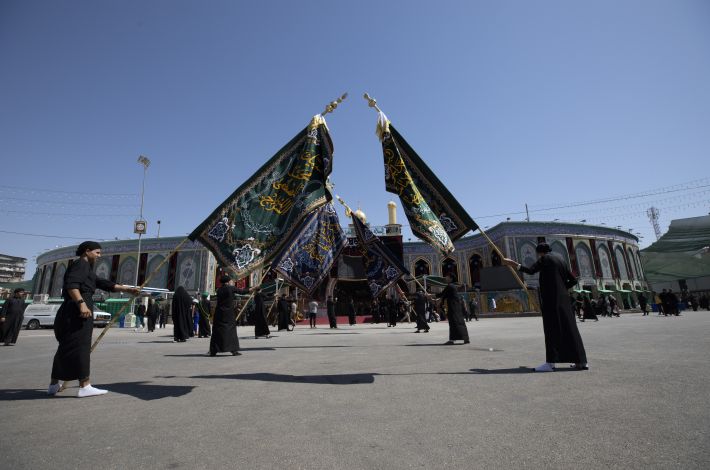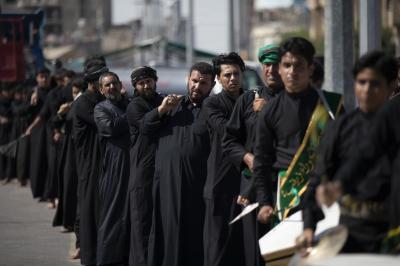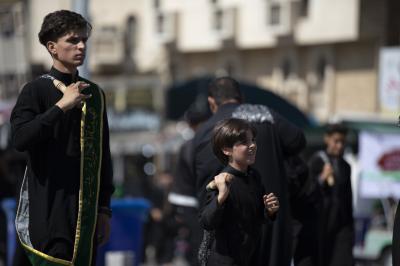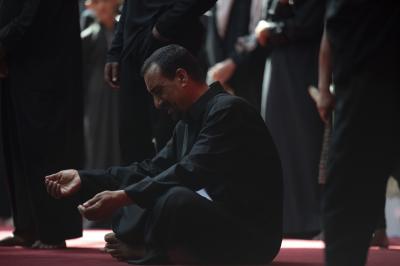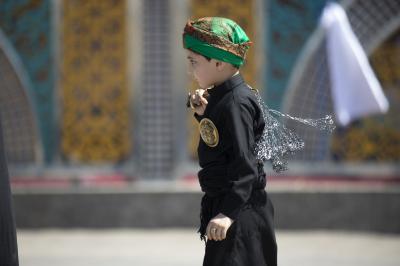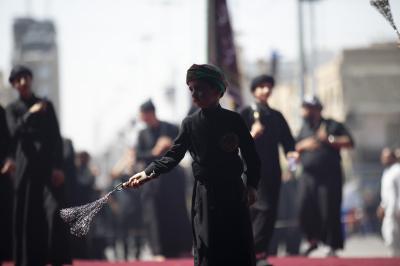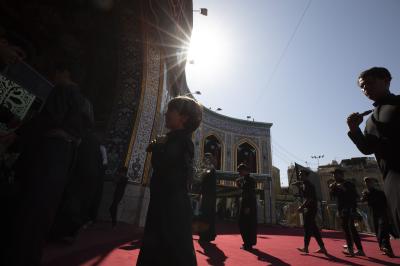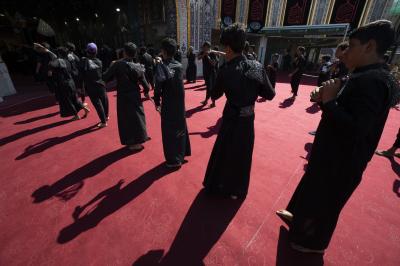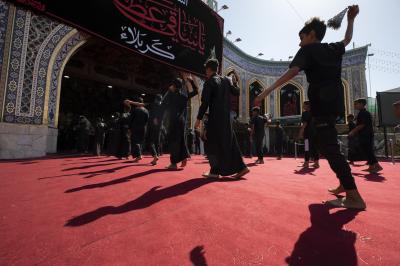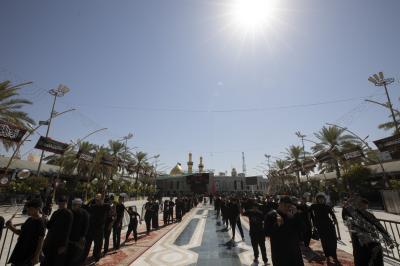The entrances to the Old City and the roads leading to the shrines of Imam al-Hussayn and his brother Aba al-Fadl al-Abbas (peace be upon them) witnessed large influx of Karbala condolence processions on the fifth day of the holy month of Muharram.
The funeral processions on this day recalled the Companions of Imam al-Hussayn (peace be upon him) who made their sacrifice for the sake of the imam (peace be upon him), evoking their positions in the at-Taf tragedy, by chanting elegies and Hussayni poems.
The mourning processions in the first ten days of the month of Muharram concern the people of Karbala, which is a mourning custom that they have been keen to establish since ancient times and begins with the descent of the Zinjeel mourning processions, in memory of the cause of Imam al-Hussayn (peace be upon him), and the renewal of the Covenant and loyalty to him (peace be upon him).
The mourning processions in the first ten days of the month of Muharram concern the people of Karbala, which is a mourning custom they have been keen to establish since ancient times and begins with the descent of the Zinjeel mourning processions, in memory of the cause of Imam al-Hussayn (peace be upon him), and the renewal of the Covenant and loyalty to him (peace be upon him).
The movement of the Processions is carried out according to an organized plan, developed by the Department of Hussayni Rituals, Processions and Bodies at the holy shrine of Imam al-Hussayn and al-Abbas's (peace be upon them), as its march is through specific streets leading to the Qibla gate of the shrine of Aba al-Fadl al-Abbas (Peace be upon him) passing through its Holy Courtyard, and then out from the gate of Imam al-Hassan (peace be upon him) to conclude at the shrine of the Lord of martyrs; Imam Aba Abdillah al-Hussayn (peace be upon him), through the square between the Two Holy Shrines.
The department allocates teams to accompany the March of each procession from the moment it starts to its conclusion, to avoid overcrowding, following special routes to ensure that there is no intersection between one procession and another or with visitors.
